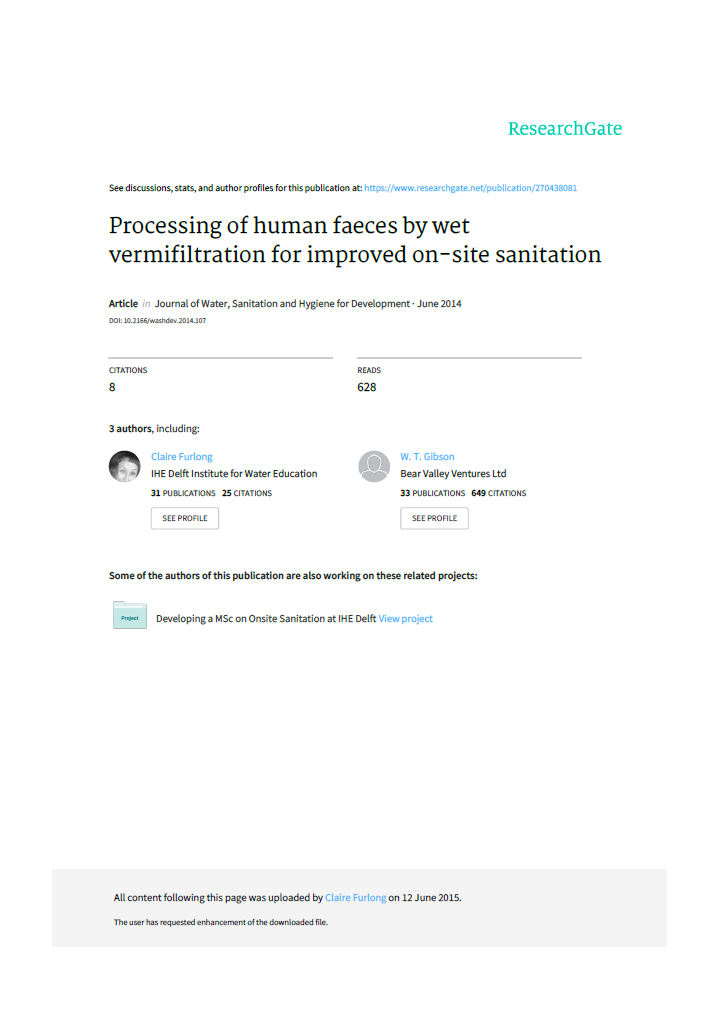Processing of human faeces by wet vermifiltration for improved on-site sanitation Furlong, C., Templeton, M. R., Gibson, W. T. (2014)
The use of a vermifilter containing Eisenia fetida to degrade human faeces in a continuous wet system was explored. This paper aimed to understand the formation of vermicompost within the system, the quality of the effluent produced, and the effect of different bedding matrices. Eight filters were constructed, utilising four different bedding materials: four of these systems were seeded with 400 g of worms (vermifilters) while the others served as controls. The systems were flushed with 12 litres of water per day and the experiment was split into five phases, each with different feeding regimes. Between 23.7 and 24.7 kg of fresh human faecal matter was added to the vermifilters over the 360 day period. The presence of the worms was found to increase the faecal reduction to 96% in the vermifilters on average, compared to 38% in control systems on average. Statistically significant reductions in phosphate, COD and thermotolerant coliforms were achieved in the effluent of all vermifilters. The most suitable bedding matrix was a mixture of coir and woodchip. This study shows that there is potential for continuous treatment of human faeces using wet, onsite vermifilters.
Bibliographic information
Furlong, C., Templeton, M. R., Gibson, W. T. (2014). Processing of human faeces by wet vermifiltration for improved on-site sanitation The Journal of Water, Sanitation and Hygiene for Development.
Filter / Tags
Vermifilters, vermifilter toiletsPeri-urbanEnglish

